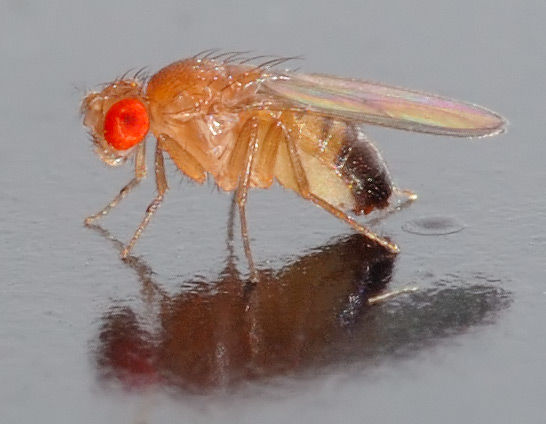Study looks into connection of fruit fly hearts and those of humans

Iowa State researchers have looked to flies and their cardiac muscles as a way to develop new therapies for heart disease.
January 14, 2020
Researchers studying fruit flies and their hearts found a connection between fly hearts and human hearts.
Hua Bai, assistant professor of genetics, development and cell biology, led a study and was published recently in the academic journal “Autophagy” that explores the genetic mechanism that causes fly cardiac muscles to deteriorate with age.
Bai said the research team restored much of the cardiac function in middle-aged flies, which experience many of the same heart maladies as middle-aged humans.
To measure cardiac function parameters, semi-intact adult fly hearts were prepared by exposing abdominal heart tubes by cutting off the head and ventral thorax of the fly and then removing the ventral abdominal cuticle and all internal organs.
The researchers’ approach started with autophagy, a cellular “cleanup process” that removes and recycles damaged proteins and organelles. The autophagy process slows with age, which can lead to the weakening of cardiac muscles.
Bai’s research team looked at a key genetic pathway conserved in virtually all organisms on Earth related to autophagy that balances organism growth with nutrient intake. This pathway, called mechanistic target of rapamycin (mTOR), has long been linked to tissue aging, Bai said.
One of two complexes that underlie the mTOR pathway, mechanistic target of rapamycin complex two or mTORC2, decreases with age as autophagy declines. But the researchers found that transgenically boosting mTORC2 strengthens heart muscles of older fruit flies.
“Boosting the complex almost fully restored heart function,” Bai said.
The discovery that enhancing mTORC2 slows the decline of the critical autophagy process could have big implications for how doctors treat patients with heart disease, one of the leading causes of the death of humans in the United States.
While flies and humans might seem to be worlds apart evolutionarily, Bai said the two species’ hearts age in a similar fashion. By middle age, cardiac muscles in both species tend to contract with less strength and regularity.
“The fly model can be useful for developing drug target discoveries that could have a big impact on human health,” Bai said.
The researchers arrived at their conclusions after conducting thousands of video recordings on cardiac muscles in fruit flies of various ages. High-resolution, high-speed cameras measured the activity of the flies’ cardiac muscles.
The experiments showed that boosting mTORC2 could restore a five-to-six-week-old fly’s heart function to that of a fly between one and two weeks old. That’s like restoring a middle-aged heart to how it functioned during young adulthood, Bai said.
Because flies live only between two and three months, it’s much easier for scientists to study aging and longevity in flies than in more long-lived species, Bai said, and the ability to manipulate the fly genome also makes them ideal for genetic study and a common model organism.
Flies were maintained at 25 degrees Celsius, 60 percent relative humidity and 12 hour light/dark, and adults were reared on agar-based diet with 0.8 percent cornmeal, 10 percent sugar and 2.5 percent yeast.






